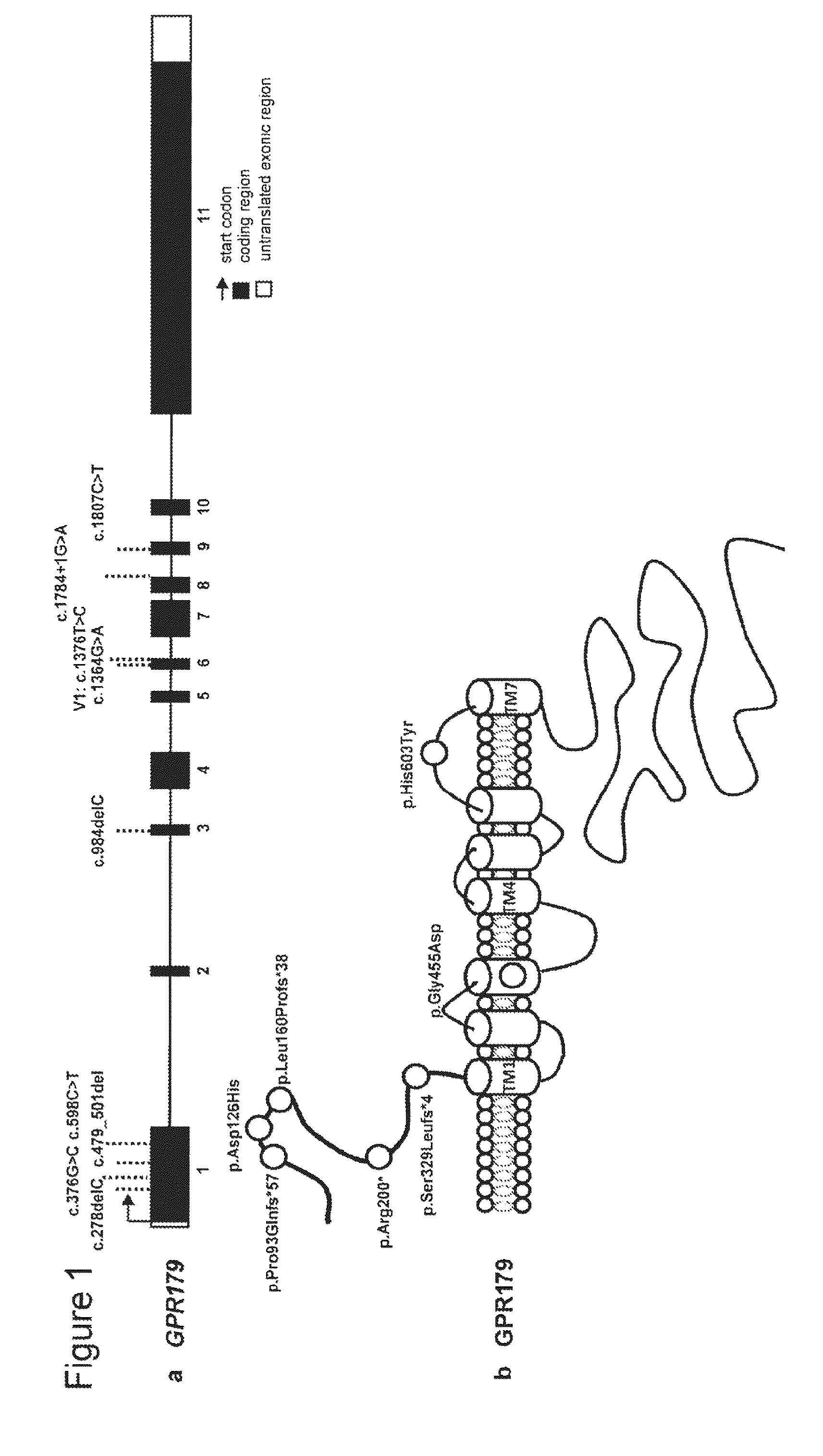Mutations of the GPR179 Gene in Congenital Stationary Night Blindness
a technology of stationary night blindness and gpr179, which is applied in the field of gpr179 gene mutation in congenital stationary night blindness, can solve the problems of progressive degeneration or more stationary visual deficits, and no single biomarker is sufficiently specific to provide adequate, and achieves the effect of increasing the number of exon 8 skipping
- Summary
- Abstract
- Description
- Claims
- Application Information
AI Technical Summary
Benefits of technology
Problems solved by technology
Method used
Image
Examples
example 1
Mutations in GPR179 Lead to Autosomal Recessive Complete Congenital Stationary Night Blindness
[0133]1.1 Whole Exome Sequencing
[0134]To rapidly identify the missing mutations in CSNB cohort 4 exomes from a consanguineous autosomal recessive (ar) cCSNB family (parents who were first cousins, and two of three affected children) and from a sporadic male cCSNB patient of Portuguese origin were sequenced after whole exome enrichment (IntegraGen, Evry, France). One index patient from each family was previously excluded for mutations by Sanger sequencing in GRM6 and TRPM1. In addition, the sporadic male case was also excluded for mutations in NYX. Research procedures were conducted in accordance with institutional guidelines and the Declaration of Helsinki. Prior to genetic testing, informed consent was obtained from all patients and their family members. Ophthalmic examination included best corrected visual acuity, slit lamp examination, fundoscopy, perimetry, full-field electroretinograph...
example 2
[0151]The GPR179 mutation spectrum leading to cCSNB compromises deletions, nonsense mutations, splice site and missense mutations. Even though the underlying pathogenic mechanism for the truncating mutations is estimated to be complete loss of functional GPR179, the impact of the missense mutations could be either due to mislocalization of the protein, absence of ligand binding or loss of interaction with other proteins important for signaling from photoreceptor to bipolar cells.
[0152]It has been shown that mouse Gpr179 transcript is expressed in the upper part of the inner cells, presumably in bipolar cells and that the human orthologue localizes in the tips of the dendrites of bipolar cells in human retina.
[0153]In the present study, it was investigated the impact of the missense mutations by performing life cells staining and subsequent intracellular staining of normal and mutated GPR179 protein in vitro.
[0154]While the normal GPR179 could be detected at the cell surface of COS-1...
PUM
 Login to View More
Login to View More Abstract
Description
Claims
Application Information
 Login to View More
Login to View More - R&D
- Intellectual Property
- Life Sciences
- Materials
- Tech Scout
- Unparalleled Data Quality
- Higher Quality Content
- 60% Fewer Hallucinations
Browse by: Latest US Patents, China's latest patents, Technical Efficacy Thesaurus, Application Domain, Technology Topic, Popular Technical Reports.
© 2025 PatSnap. All rights reserved.Legal|Privacy policy|Modern Slavery Act Transparency Statement|Sitemap|About US| Contact US: help@patsnap.com



